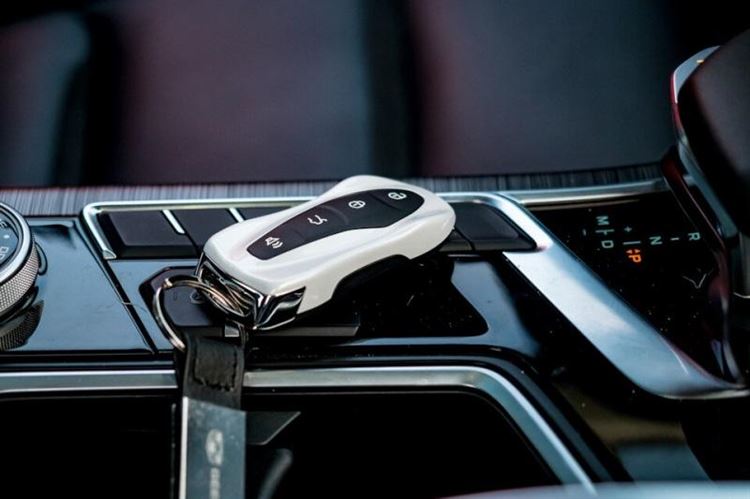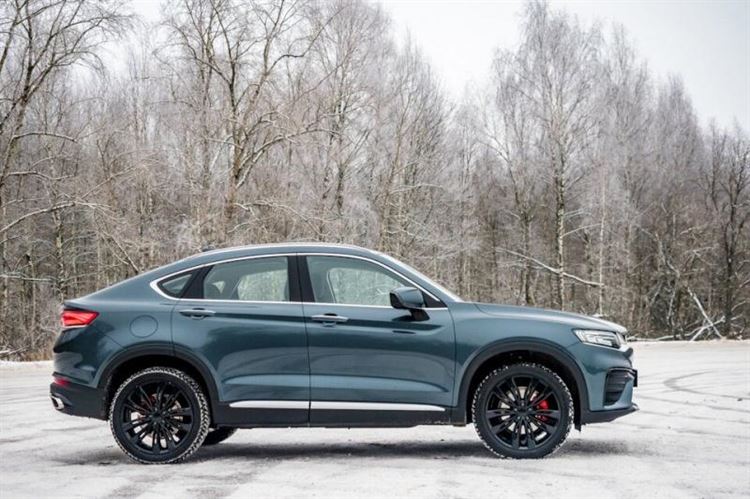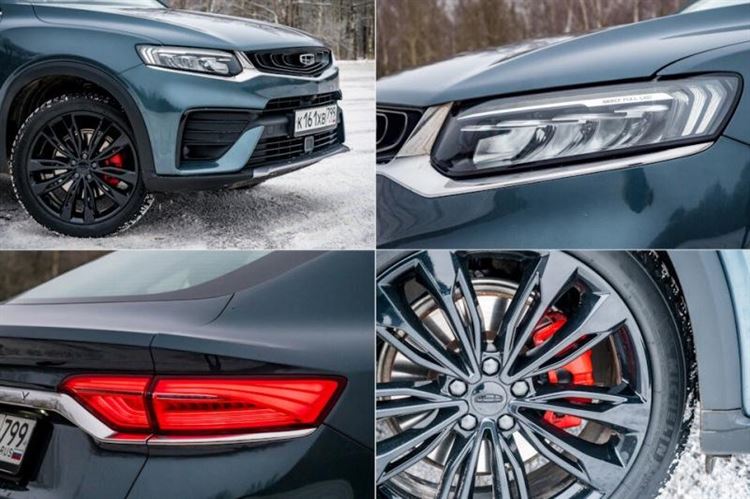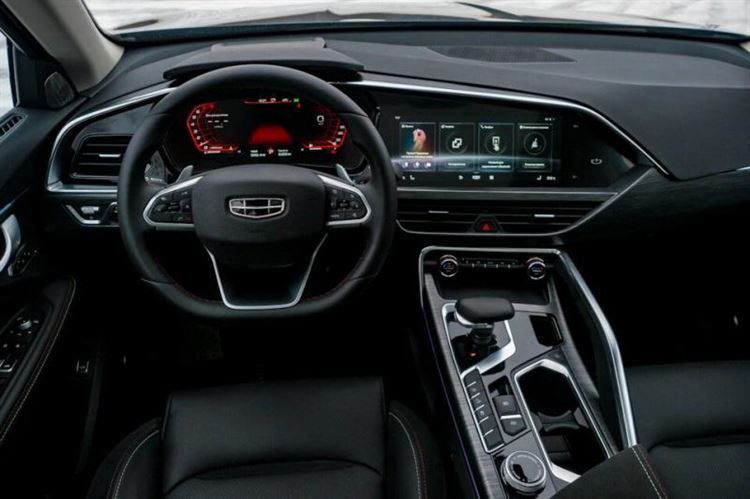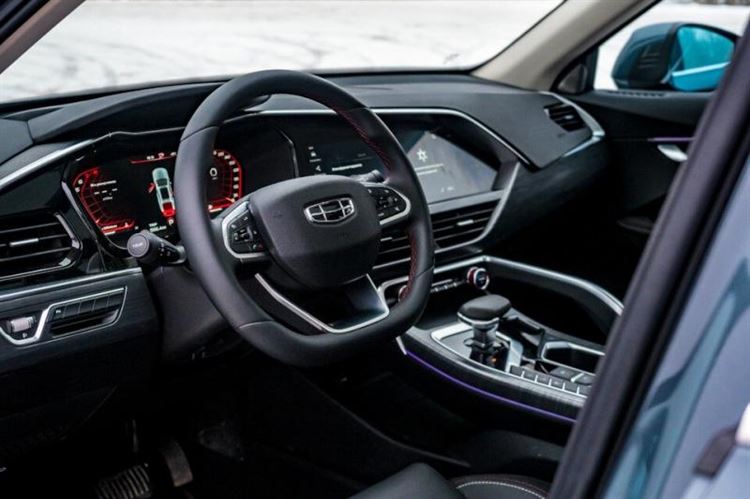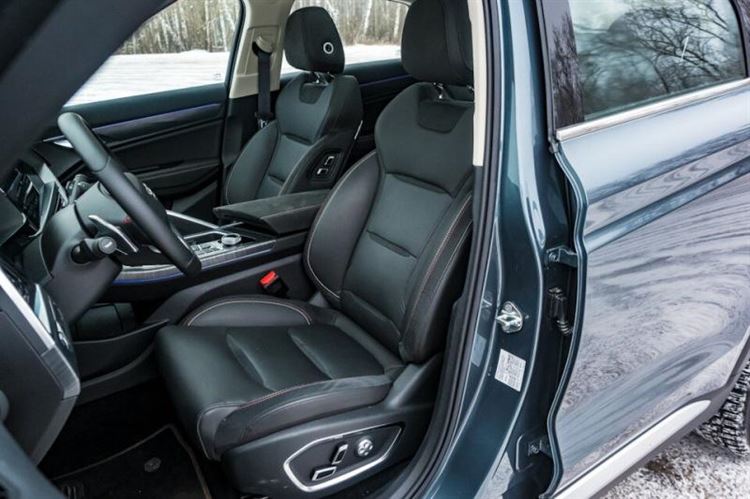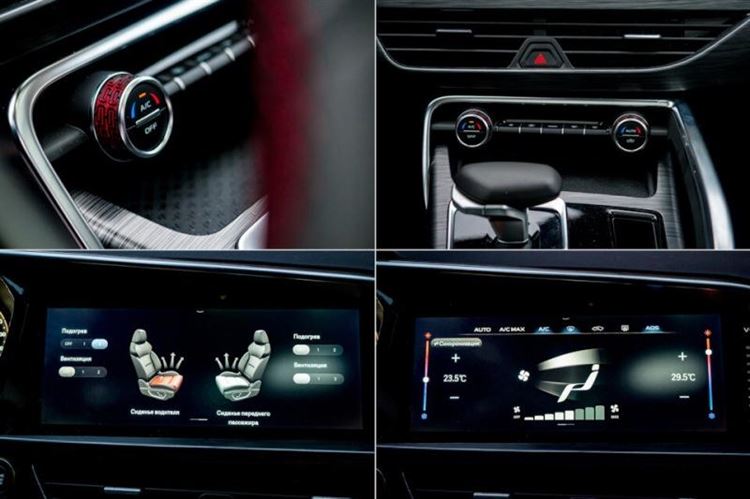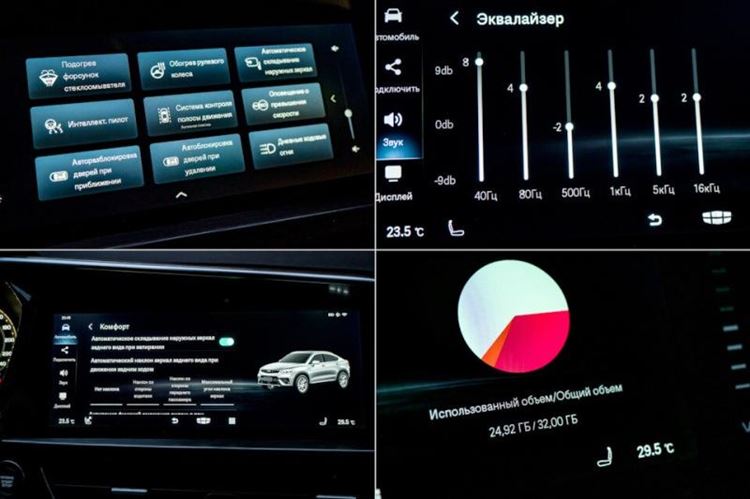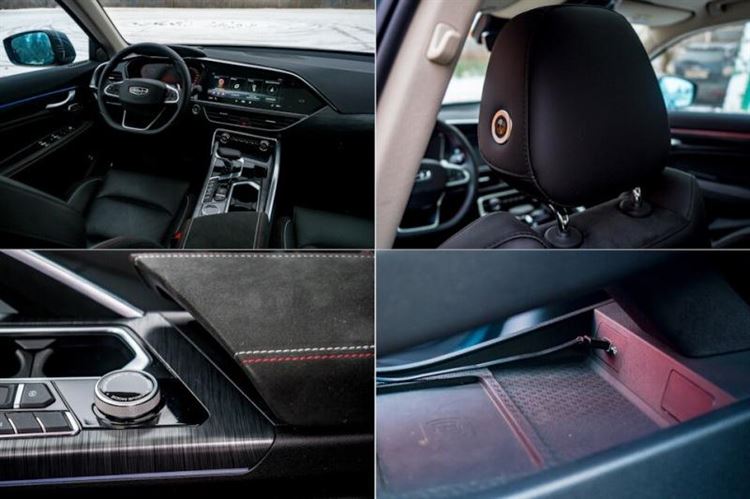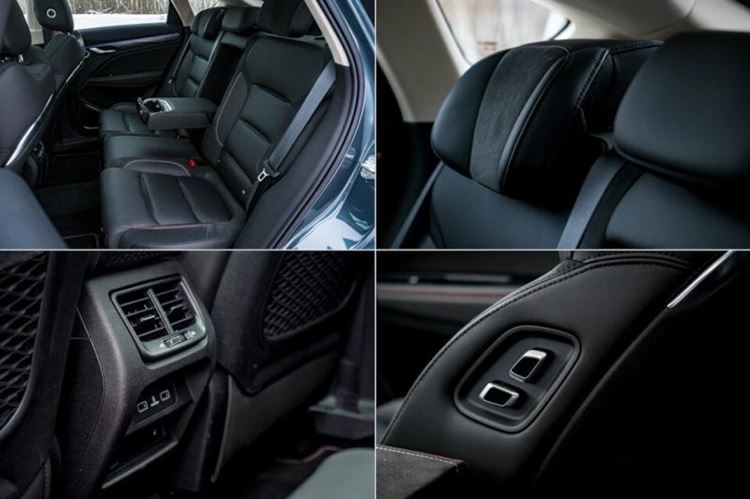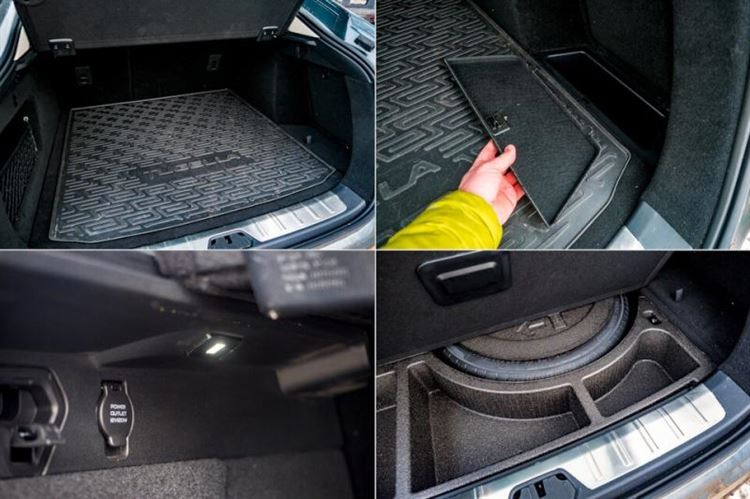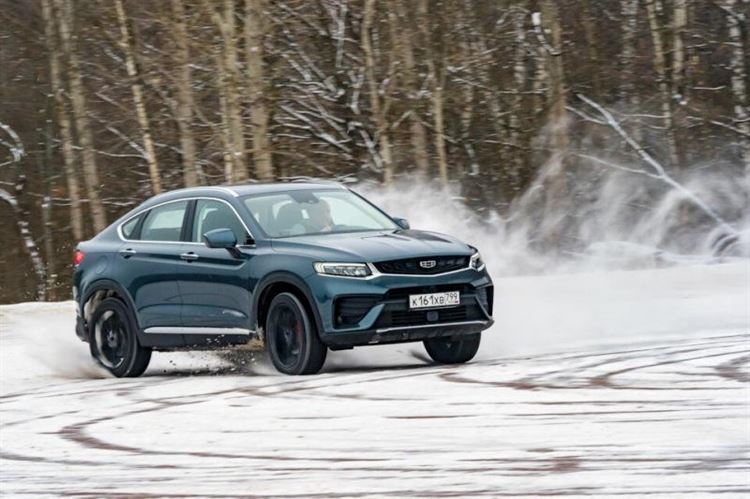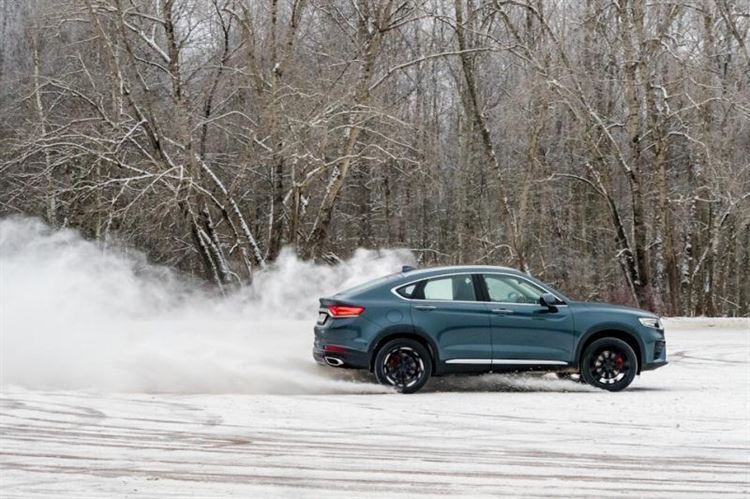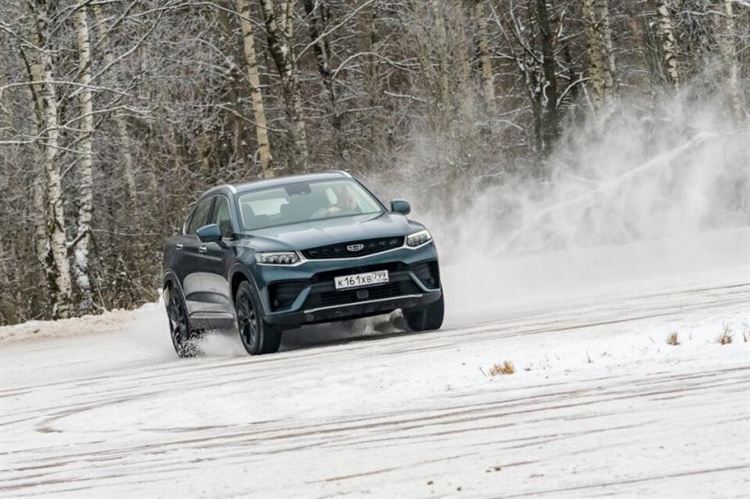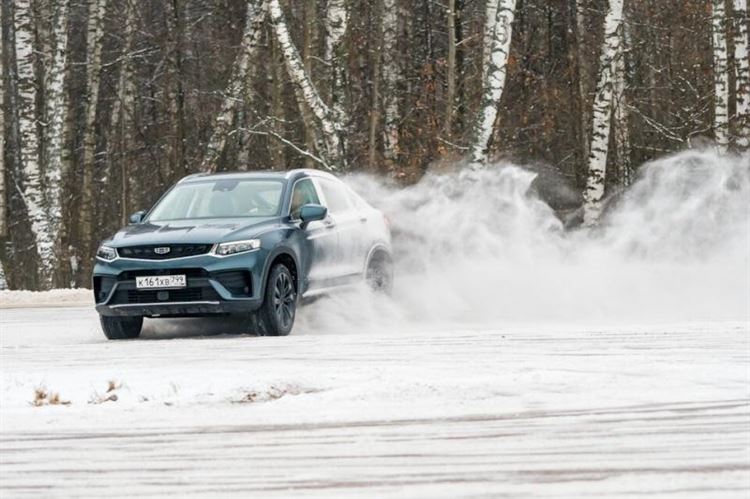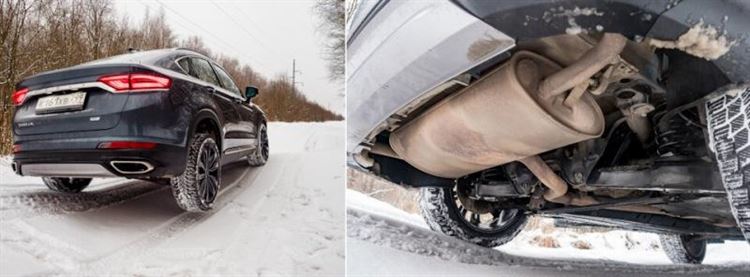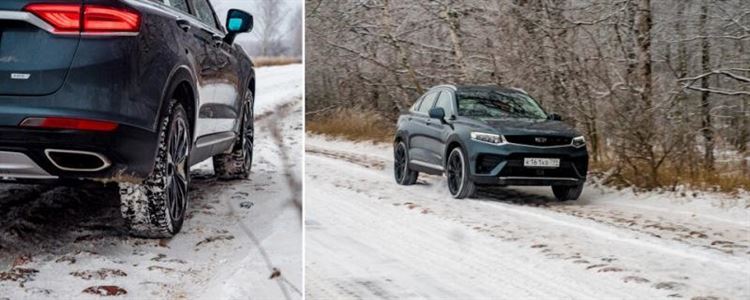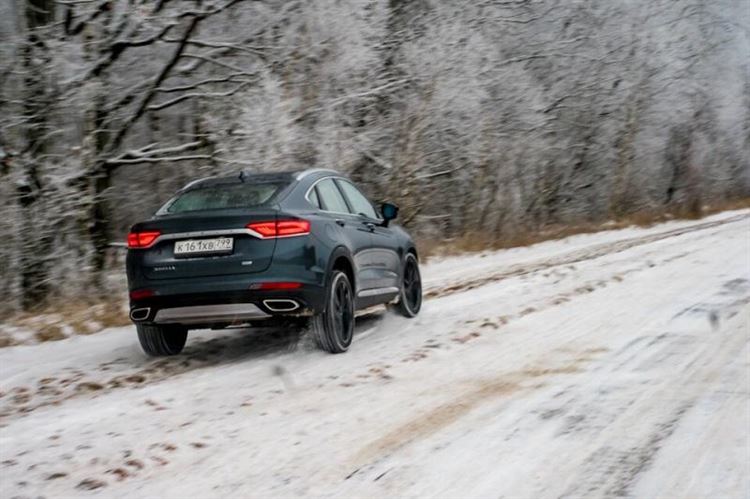What’s wrong with the Geely Tugella? Detailed test drive of the Chinese novelty.
Partner publicationNew Chinese crossovers appear like mushrooms after rain. A bright wrapper, juicy stuffing with an abundance of multimedia screens, a lot of leather and electric drives are already in the database. And, of course, at an affordable price that outweighs the voice of reason in the minds of buyers.
Understand correctly, I respect the progress of the Chinese car industry, but the so-called duck test (what looks like a duck, quacks like a duck, and swims like a duck, most likely is a duck) is not very good for Chinese cars and applicable. They look really bright, great, but in fact, when you start to ride them, you encounter a completely inexplicable amount of electronic glitches, illogical transmission behavior, jerks, knocks in the suspension or steering, and so on. That is, neither in terms of suspension, nor in terms of driving properties, Chinese cars usually fall short of their appearance. Yes, and quality issues appear earlier than we would like, not to mention the availability of spare parts.
In the case of Geely Tugella, in theory, everything is different. Geely has been the owner of the Volvo brand for 10 years. You will not find the Volvo brand in the manufacturer ratings – it says Geely Group. The Tugella, named after a South African waterfall, is built on the CMA platform “developed with Volvo" familiar from the Volvo XC40. The Chinese say that Tugella is a competitor to Tiguan, Mazda CX-5, Toyota RAV4.
The statement is bold, given that until recently, Geely cars did not have enough stars from the sky. Yes, a solid but unimpressive Atlas, yes, a beautiful Coolray with a technologically advanced turbo engine and a cool interior, but none of these cars drove like the Europeans drive. This applies to handling, and suspension work, and the consistency of transmission settings. Considering the cost of Tugella in 2 trim levels of 2.5 and 2.4 million conventional units, Grigory, an avid race car driver, and I decided to approach the car without condescension.
Appearance
Let’s start not with the car itself, but with its ignition key, which is made in the form of a stylized toy car. The key fob is beautiful, well-made, but obviously resembles similar keys on a Porsche.
The design pleases not with specific design techniques, but with the consistency and harmony of the appearance. We’ve heard a lot about Peter Horbury, former Volvo design chief and now Geely Auto’s vice president of design, and now the product of his team looks really great. It turned out to be a fashionable and distinctive coupe-crossover, 20 cm longer than the Volvo XC40 (although they have virtually the same wheelbase).
The proportions to the look are added by 20-inch wheels with 245/45 R20 tires, red brake calipers shine through the slots of the rims.
Front brake discs – 322 mm, rear 302 mm. On the plastic of the rear arches, small shields-expanders are noticeable – almost like on charged modifications of premium German crossovers.
As for the optics itself, despite the 348 diodes in the headlights and lanterns announced in the advertisement, the head light is an ordinary reflex, there are no lensed blocks, and, moreover, there are no headlight washers. That is, the luminous flux of low beam diodes, according to the technical regulations of the vehicle, is limited to 2000 lumens, which is not so much, given simple optics. In the top Volvo XC40, by the way, there can be rotary modular adaptive headlights, although such a car costs more than four million conventional units.
Pleased with the absence of excess chromium. There is no wiper blade on the heavily sloped tailgate glass – this is not only a design trick, but also part of the work to improve aerodynamics. The drag coefficient here is lower than that of the Porsche Macan and BMW X4. Although, this in itself does not mean that the rear window will always be clean. In many conditions this does not work, trust me as the owner of Arkana. Comfortable door handles are illuminated, and colored logos of the brand are projected from the mirrors onto the ground.
Technics
Under the hood, which opens with two movements of the saloon lever (no need to look for a latch under the edge of the hood) – a two-liter Volvo Drive E series turbo engine closed with plastic shields – one to one, like on the XC40 T5, only the power is reduced from 249 to 238 forces (the moment remained the same same – 350 Nm). The engine has the potential for tuning, because there is a stock 300-horsepower version on such a block, and the block itself is unified with diesel engines of the series.
The transmission is automatic. The 8-speed automatic Aisin, which is delivered directly from Japan to the Chinese plant where this car is produced (although the test car is from a pre-production batch, disassembled in China and reassembled in Belarus). Some of the technical solutions are hidden from view. For example, electric power steering mounted on the steering rack – this solution is used on most good cars in the middle class. First of all, this ensures the accuracy of the reactions to the control, as well as the wide possibility of introducing steering assistants, which are also here.
The car is all-wheel drive, with a Borg Warner electro-hydraulic clutch, which is colloquially called the 5th generation Haldex clutch. The clutch withstands 2000 Nm, despite the fact that the engine itself develops only 350 Nm. The numbers do not need to be compared directly, the loads on the driveshaft during the operation of the all-wheel drive increase significantly, but nevertheless, for a very large number of middle-class crossovers, the clutch limit is half that.
Tugella has not yet passed the EuroNCAP crash test, there is no American test, which is understandable – the car is intended primarily for the Chinese market, and, of course, for non-European markets. But the use of a common platform with Volvo leads to the widespread use of high-strength steel. Roof and door reinforcements are made of ultra-high-strength hot-forged steel, and the share of ordinary high-strength steel in the body structure reaches 72.4%.
However, the car has 6 airbags, and a Chinese crash test can be found on the Internet, which includes an overhead impact that simulates a rollover, side impacts, and a frontal impact with 25% overlap. I’m not strong in Chinese, but Geely Tugella seems to pass all the tests successfully.
The car comes with a 5-year or 150,000-kilometer limited warranty. For maintenance, one of the 87 dealers of the brand (a year ago there were 65) will need to be visited every 10 thousand kilometers.
If we look under the bottom, we will see the independent suspension front and rear, as well as the fact that almost the entire bottom is covered with flaps that improve the aerodynamics of the car. There is practically nothing to complain about here. There are no details protruding downwards, such as the gas tank on the Atlas. From an off-road standpoint, I have a couple of gripes. The engine is covered only with a plastic boot. In the area of the rear gearbox there is a rather thin cross member, which can be damaged by a serious impact on a stone.
A radar is installed in the bumper. Behind it are blinds that cover the engine radiator in warm-up mode. That is, when the engine is cold, the blinds are closed so that the car warms up faster. They open themselves when the engine warms up and close again to conserve heat when needed. This achieves faster warm-up and fuel economy (sorry, reduced emissions).
Interior
Lock sensors are only on the front door handles. Doors open wide enough. In the position open to the limit, I estimate their degree of fixation as average, and there is not enough intermediate fixed position. The doors are heavy – apparently, there is a lot of sound insulation in them. The doors close clearly, although perhaps not as gently as on the best representatives of the premium part of the C-SUV segment.
Noteworthy is the design of the lower door seal. Thanks to the L-shape, it qualitatively prevents dirt from entering the inner surface of the door and the surface of the threshold – many crossovers, including European ones, sin with this.
The interior has a modern Chinese style – two large screens, a pen, and a telephone hidden on a shelf under the console. The quality of the finish and fit is really high.
Metal-look pads are not cheap plastic, they are at least covered with a very thick layer of metal film, since for about 40 minutes after you got into a cold car, they also remain cold, although the car itself is “warm” .
Often, the chairs look good on the Chinese, but when you sit down, you fall through to the frame. Everything is wrong here. Armchairs are a little softer than on the Germans, but their shape, relief and density of stuffing seem optimal to me. Both seats are electric, the front passenger seat can also be adjusted from the rear sofa using the keys located on the left side. The head restraints can be adjusted both in height and in reach with the help of a button. The only thing I miss is the adjustment of the pillow under the knees and the degree of pressure of the side bolsters.
For a driver of average height, the seating position is comfortable, but tall drivers will complain about the lack of steering range for reach. The steering wheel itself has an optimal shape, section, flattened from below. The buttons on the spokes do not interfere with the correct grip of 9 and 3. Visibility, despite the narrow and low windshield, is good – after all, the mirrors are on legs on the door panel.
There is a memory of the positions of the chair and side mirrors, which, like the salon mirror, have auto-dimming. When getting into the car, the seat moves back. When you get back into the car and close the door, it pulls up to its original position. In general, the car is smart, and remembers all the settings, including the selected engine mode, auto-hold settings, and so on.
The instrument panel is digital. Similar to what is on Volvo, but larger and cooler in terms of graphics quality. Animation when you turn on different display modes works quickly and without delay, you can’t find fault with the resolution of the panel.
But there are nuances. For example, the speed figure is small and is always placed only inside the right scale of the dashboard. At the same time, the tidy has a large central zone, into which the data of the so-called “intelligent pilot” is displayed, but in general this zone is practically not in demand. Personally, it seems obvious to me to bring a large speed value there. Or, for example, a navigator map, but there is no navigation system in the car.
On the left side of the tidy, the readings of the trip computer are displayed. Under the steering wheel are convenient gearshift paddles. The paddle shifters themselves are traditionally from Volvo.
The automatic transmission selector of the drive by wire type is non-fixed, with a parking activation button located on the left front end. Someone says that it is inconvenient, in my opinion, you can get used to it.
On the climate control panel are the few analog buttons in this car, other than those on the steering wheel and on the center console. The encoders are of high quality, they work accurately and with the correct discreteness, but on a very cold car they rotate a little tight. Once the car warms up everything is fine. There is also an air quality control system that automatically turns on recirculation, and a CN95 filter that can deal with particulate matter PM 2.5, tobacco smoke and allergens.
Panoramic roof with sliding front section. LED lamps in the cabin are switched on with buttons and without dimming. On the visors, the curtains open with some effort.
multimedia system
The multimedia system is the heart of the Tugella interface. Almost all vehicle functions are controlled from the 12.3-inch screen. The interface is very fast. Many expensive cars have slower graphics.
The interface is simple and clear. But the screen is large, and it could be divided into several functional areas – this is not here.
There are customizable widgets and an all-round camera with a high-quality HD picture. There is pedestrian detection. The camera can be switched to 3D mode and rotate the machine. The picture in this mode is almost not distorted. That is, if you stand close to several cars or drive past them in a traffic jam, then often on expensive European cars the cars are disproportionately sized, they are either larger or smaller than necessary, but everything is right on Tugella.
In the old Chinese tradition, there is no Car Play or Android Auto. But there is its own synchronization system, namely “mirroring” the screen of your smartphone on Android or iOS.
Everything is easy to set up. You just need to install the program, connect your smartphone to the central multimedia connector via a USB cable. No Type-C! You agree to the connection, and you see on the GU screen a complete "mirror" of your smartphone. The picture is broadcast in its original resolution, more precisely, in its original proportion. Thus, in this mode, part of the GU screen will not be used. But you can read Drive2, watch Youtube, series. Responding in messengers from the GU screen, however, is not convenient – the keyboard is too small. In the settings, you can make sure that these functions are also available in driving mode.
The climate is controlled not only from the encoders, but also from the screen, and the screen interface is purely "Volvo". Moreover, there are several “gestures” in the system that are recognized not by the camera, but by multi-touch, that is, using 3 fingers, you can return to the previous menu (swipe to the right), or, when they move vertically up or down the screen, adjust temperature in the selected climate zone.
Ventilation and heating of the front seats is activated only through the screen. Only the seat cushion is heated or ventilated, not the backrest.
The main menu, which includes important functions, is not visible anywhere on the screen. To make it appear, you need to swipe from top to bottom. The menu includes electronic assistants, heated steering wheel and nozzles. At the windshield, only the rest zone of the wipers is heated, but not the glass itself in bulk. I would prefer to have full heating.
Atmospheric illumination is regulated through the menu, the maximum brightness is high. You can bind the color to the driving mode, or choose your own.
As for the audio system, there are no inscriptions like JBL, Harman / Kardon or Bose on the speaker grilles, but the sound is of high quality, with a good margin in volume and low frequencies. There is no analog volume control. You need to control the volume either from the steering wheel or using the touch strip to the right of the GU screen.
In some modes, this strip is duplicated. That is, another volume control appears, pulling it to the left, you will also find the volume control in talk mode.
The choice of driving mode (Comfort, Sport, Economy, Deep snow or Offroad) must be confirmed by pressing the selector, which is located on the center console. There are also cup holders, next to which there is a button for heating or cooling. Heats and cools efficiently, but only one cup holder – the one closest to the glove box lid in the center of the console (the button is located in front of the cup holder unit). This cover, by the way, is not adjustable either in height or in reach, but it is trimmed with high-quality soft suede with two-tone stitching.
There is one more thing. The on-screen button for calling up the driver’s temperature setting, as well as heating or ventilation of the driver’s seat, is located at the bottom left of the screen. And it is this zone that the steering wheel slightly obscures, at least for a person of average height.
Second row
The tailgate glass drops completely – a big plus. On many coupe-crossovers, and indeed on many modern cars, the glass does not go down completely, but only two-thirds. You can even cross your legs, sitting by yourself, with a height of 172. But this is not very convenient, because you have to lift your leg high. Otherwise, the seats are good, not too soft like other Chinese competitors, and better finished.
There is a center armrest with a glossy panel to smear it with your fingers. It has coasters. There are ventilation deflectors, but there is no separate climate zone, it would be appropriate for such an expensive car. Two USB connectors with powerful power supply. But it is difficult to find the buttons for turning on the heating of the sofa. They are located at the very bottom of the reverse part of the tunnel, you need to reach out.
Trunk
The trunk with a volume of 325 liters under the shelf or 446 liters without it does not impress with its size and configuration. In fact, it is about the same as in my Arkana. The compartment is finished qualitatively. You can open it as you like: either with a button, or with a key, or with a wave under the bumper with your foot, or with a special key located on the left front door. Through the GU menu or through the button on the tailgate, you can set its maximum opening height. In the underground there is a stowaway, a lot of soundproofing and an organizer.
The seats do not fold into a flat floor, but with a small slide. As for the shelf, here it is made with high quality and has a design with a hinge in the middle. This makes it easier to load large items into the trunk. On many premium coupe-crossovers, this shelf is simply rigid, one-piece. Although the fixation of the shelf itself seemed to me somewhat insufficient, it should snap into place a little harder. But on the go nothing rattles and knocks.
riding
It’s time to move on to how the Geely Tugella drives, and here I’m ready to take my hat off to the Geely Auto engineers.
For starters, the Tugella is absolutely flawless and as responsive as possible for an engine with a reasonably large turbo and some turbo lag. The gears shift without hesitation, without jerks, everything happens exactly as you would expect from a good expensive car. The dynamics are excellent, measurements on a wet road showed 7.4-7.5 up to a hundred, which is slightly worse than the passport 6.9.
The steering wheel is slightly electronically tightened, and here it is definitely heavier than on the XC40 (even in parking mode). Such a setting may seem to some drivers to reduce the information content of the steering, but in fact it is not. For example, unlike the XC40 T5, when accelerating to the floor, the car does not throw left and right on a rough road. Acceleration is very stable, without pulling, even if there are longitudinal ruts under the 20-inch wheels.
The steering wheel is short, 2.7 turns from lock to lock. The chassis feels quite stiff on repeated asphalt bumps, but the speed smooths out all those bumps.
I rate the handling of the car at five. Yes, there are moderate rolls, but the Tugella obeys the steering wheel precisely, allows you to quickly maneuver, and at the same time the chassis is set up very correctly. There is no pronounced tendency to demolition. Rather, on the contrary, under gas, the car tends to turn the rear axle, but again, it does not frighteningly, but exactly the way you want.
The “Sport” mode seems to be optimal for driving both in traffic jams and on the highway. In it, the car does not “gesture” with an increase in speed, quick reactions – without compromising comfort. I repeat, the combination of the motor, transmission and accelerator pedal is tuned in my opinion impeccable.
I also rate the ride comfort as high. This also applies to the work of the suspension, and acoustic comfort. The car is really quiet. And the sound of the engine at high speeds does not even want to be called noise, because the engine sounds great.
Comfortable steering wheel paddles, which I liked when inspecting the cabin, are, unfortunately, practically useless when driving. Even in sport mode, the computer spares the engine and transmission by preventing you from downshifting at high revs. And, moreover, he switches gears up when he reaches 6500 rpm. That is, it is impossible to call this regime honest.
I really enjoyed riding the Tugella on slippery roads. To be honest, I can’t remember any of the modern cars of this class and price, on which the ESP system is turned off almost completely, and gives you the opportunity to drive the car on slippery surfaces with just traction, and in a wide range. Tugella can do it all.
In other words, the side slides on Geely Tugella can give you a huge amount of joy. The car willingly goes sideways, even on wet pavement, not to mention snow and ice. There is enough traction always and everywhere, the behavior is clear and unambiguous. That is, this is a real drivers car, which you don’t expect from a Chinese at all.
Only after half an hour of drifting did we manage to see an inscription on the dashboard screen that the transmission was overheated. At the same time, the car drove as if nothing had happened, and after a 5-minute stop, we continued the drift session. Such inscriptions did not appear again.
Another amazing phenomenon was found on the off-road section, more precisely, on alternating obstacles, on which we drove in the constant diagonal hanging mode, turning on the off-road driving mode.
The stabilization system in the absence of cross-wheel locks perfectly imitates them. As soon as the suspended wheel spins, the ESP immediately blocks it, thereby transferring the moment to the wheel that has a hook. Even from the spot Tugella overcomes the “diagonal without” problems, and so time after time.
Tests on gentle transverse waves revealed the tendency of the car to vertical buildup. Needless to say, the chassis is still tuned for comfort, despite the really good driver settings.
When driving on a cobblestone bridge, the suspension began to “talk” in a muffled voice, but it didn’t even come to a knock or breakdown at all, even when we caught a concrete sleeper with our right side (this moment is on the video). Fuel consumption is easy to keep within 10 liters.
The work of electronic assistants
Electronic assistants work! Only the best European non-premium C-SUVs are able to keep the car in the lane so stably and keep the distance in the adaptive cruise control mode.
By turning on “Intelligent Pilot”, we can observe in the center of the dashboard the position of our car relative to the lane, the position of neighboring and ahead going cars relative to the lane and our car. The car in front is highlighted in blue at the optimum distance, yellow when it is reduced, and red when the automatic braking system is about to intervene. Which works without the branded “Volvo” hysteria that interferes with active driving in the city.
If you use only the lane keeping system, then it works constantly, regardless of your desires, keeping the car in the center of the lane. Yes, you can overcome it with the steering wheel, you can run into the markings, then a vibration signal appeared on the steering wheel, and the car will steer to the side on its own. When you go into an arc or turn on the markings, the car itself turns, and highlights this turn on the central section of the dashboard. There is sign recognition and speed limit indication. Adaptive control and "intelligent pilot" work up to a speed of 150 km/h.
Should I buy GEELY TUGELLA ?
The Tugella did not do without jambs, but mostly they are small. Geely demonstrates an incredible pace of evolution. The word Flagship in the name of the only complete set so far suits Tugella as well as possible. This is a real flagship, not only of the Geely lineup, but for us, many users, and the entire Chinese auto industry. This is not an imitation, it is really a very high-quality and properly tuned car for all the characteristics that could be assessed during the weekly test.
Of course, 2.5 million is a considerable figure, but, on the other hand, now eminent automakers cannot offer anything like this for this money. Even a co-platform Volvo, which is produced from the same components, built on the same CMA platform, with a similar level of equipment, will cost you at least 4 million conventional units. And at the same time, in terms of driver characteristics, it is inferior to Tugella.
Yes, the brand does not have a long history, a reputation earned over decades. But if this car were offered with a different emblem, no one would be looking for any catch in it.
Honestly, I did not think that this moment would come so quickly and so suddenly. But other models will follow the Tugella. We are in for an interesting time!

